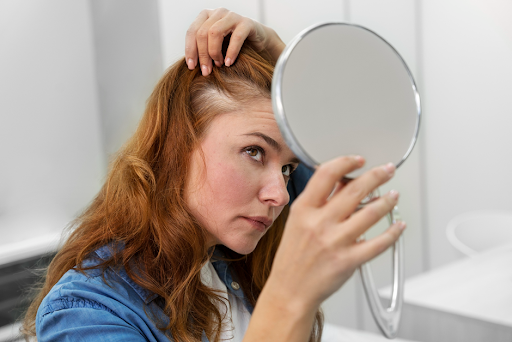Hair loss in women is more common than many realise and can have a strong emotional impact. While it is normal to lose some strands every day, excessive shedding or thinning hair can be concerning. Understanding the causes, knowing your options, and seeking the right support are essential steps to managing this issue effectively. This article offers practical guidance for women who are noticing hair loss and explores approaches such as hair loss treatment in Melbourne and hair transplant for women.
Understanding Why Hair Loss Happens in Women
There are several reasons why women may experience hair loss. Identifying the cause is the first step in addressing the problem.
Hormonal Changes and Medical Conditions
Hormonal imbalances, such as those caused by pregnancy, menopause, or thyroid issues, are common contributors to thinning hair. Conditions like polycystic ovary syndrome (PCOS) and anaemia can also affect hair health. Consulting with a healthcare professional helps pinpoint whether a medical issue may be responsible.
Genetic and Age-Related Factors
Female pattern hair loss is often hereditary. It tends to cause gradual thinning, particularly at the crown and parting lines. As women age, the natural hair growth cycle slows down, making the hair appear less dense.
Stress and Lifestyle
High levels of stress, poor nutrition, or sudden weight loss can cause temporary hair shedding known as telogen effluvium. Improving lifestyle habits and diet often helps hair recover over time.
When to Seek Professional Advice
If you notice significant shedding, thinning, or bald patches, consider booking an appointment with a professional. Early consultation gives you access to treatments that can slow hair loss or promote regrowth.
In Melbourne, clinics specialising in hair loss treatment offer assessments to determine the cause of the problem. A customised plan may include non-surgical treatments, medications, or even hair transplant for women depending on the severity.
Non-Surgical Hair Loss Treatments
Many women prefer to start with non-surgical approaches. These treatments aim to strengthen existing hair and stimulate growth.
Medications and Topical Solutions
Dermatologists or hair specialists may prescribe topical minoxidil, which is applied directly to the scalp to promote hair growth. Oral medications can also be used in certain cases, particularly when hormonal imbalances are a factor.
Platelet-Rich Plasma (PRP) Therapy
PRP therapy involves using a patient’s own blood to extract growth factors that are then injected into the scalp. This procedure encourages hair follicles to become more active. It is a popular option in Melbourne clinics for women looking for a non-surgical solution.
Laser Therapy
Low-level laser therapy (LLLT) is another non-invasive option. It uses light energy to stimulate the hair follicles, which can improve thickness over time.
Hair Transplant for Women
In more advanced cases of hair thinning, a hair transplant for women may be an effective solution. Unlike men, women often retain hair on the back and sides of their scalp. These areas can provide donor hair for transplantation.
How a Hair Transplant Works
Hair transplant surgery involves transferring healthy hair follicles from the donor area to areas of thinning. Modern techniques, such as Follicular Unit Extraction (FUE), are minimally invasive and allow for natural-looking results with minimal scarring.
Who Is a Good Candidate?
A hair transplant is usually recommended for women with stable hair loss patterns and good donor hair density. A consultation with a specialist will help determine suitability.
Lifestyle Changes to Support Hair Health
Even if you opt for professional treatment, adopting good habits can improve hair health and slow down hair loss.
Balanced Diet and Supplements
A diet rich in protein, vitamins, and minerals supports healthy hair growth. Nutrients such as iron, zinc, and vitamin D are particularly important. Where diet alone is not sufficient, a healthcare provider may suggest supplements.
Gentle Hair Care
Avoid excessive heat styling, tight hairstyles, and harsh chemical treatments that can damage fragile hair. Use mild shampoos and conditioners formulated for thinning hair.
Managing Stress
Stress can be a major trigger for hair shedding. Incorporating relaxation techniques such as yoga, meditation, or walking can help reduce its effects.
Emotional Support and Confidence
Hair loss can affect self-esteem. Seeking emotional support, whether from friends, support groups, or counsellors, can make a significant difference. Some women also choose to experiment with hairstyles, wigs, or extensions as a temporary solution while exploring long-term treatments.
Conclusion
Hair loss in women can be distressing, but it is not something you have to face alone. There are many effective solutions, ranging from non-invasive therapies to hair transplant for women, that can restore both hair and confidence. If you are concerned, consulting a clinic that offers hair loss treatment in Melbourne is a good step toward understanding the cause and finding the right treatment for you. By combining medical support with healthy lifestyle choices, it is possible to manage hair loss and feel confident again.

